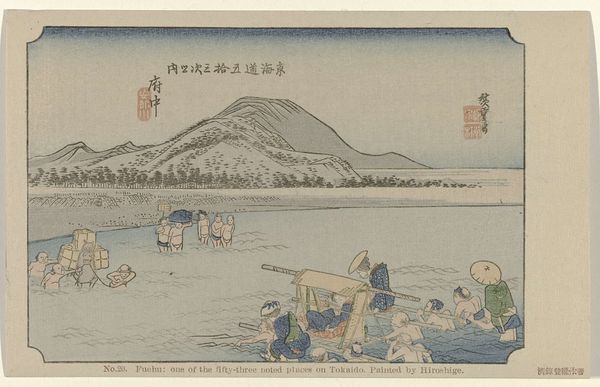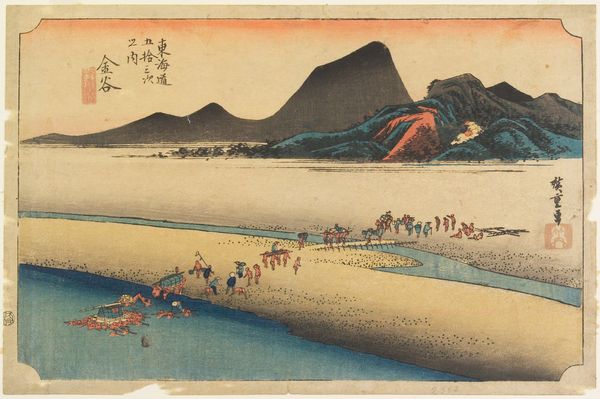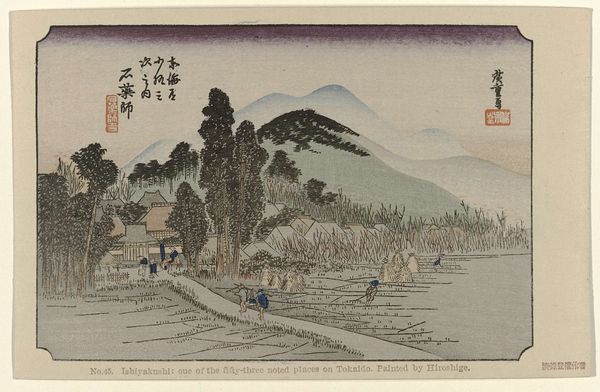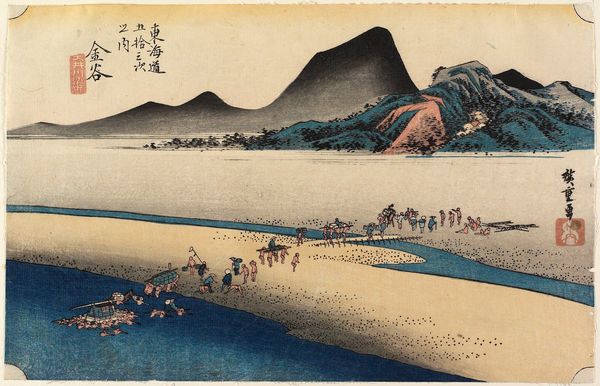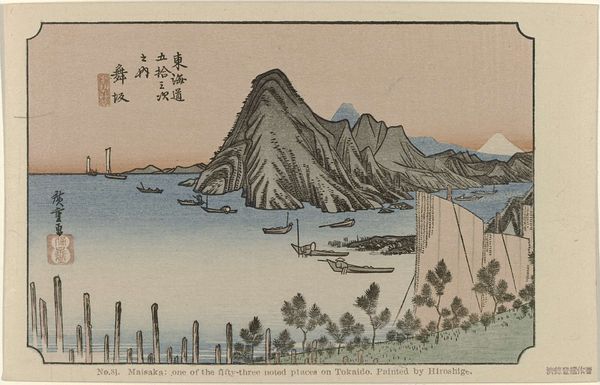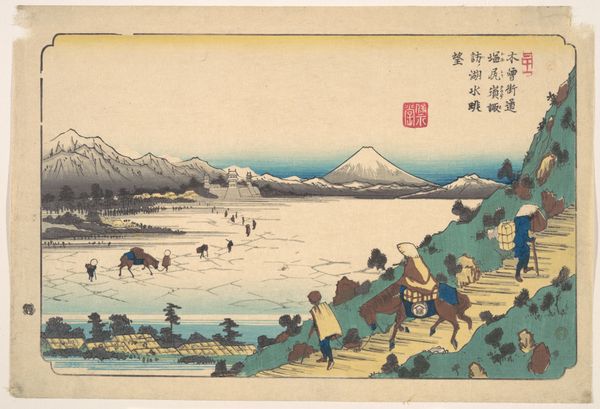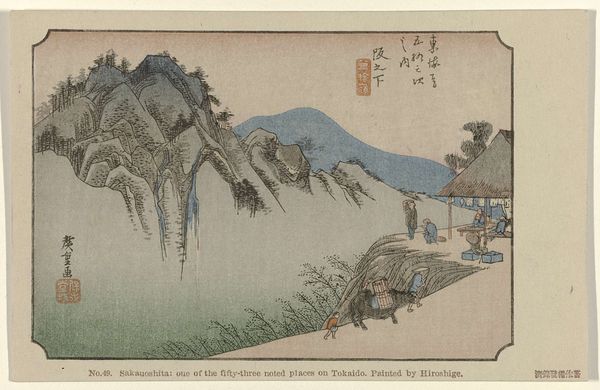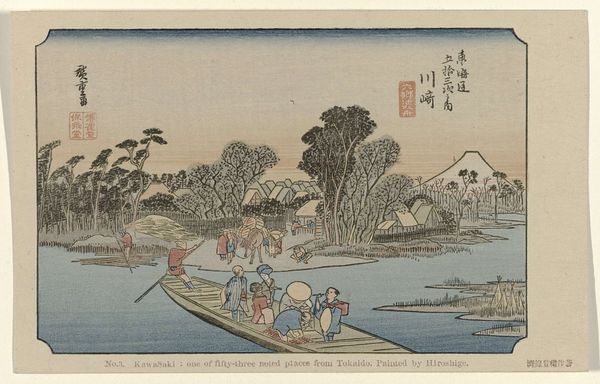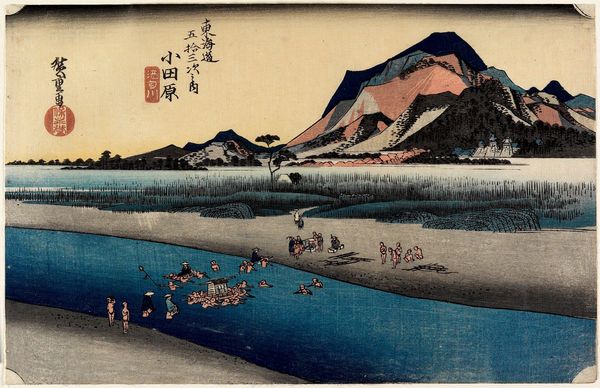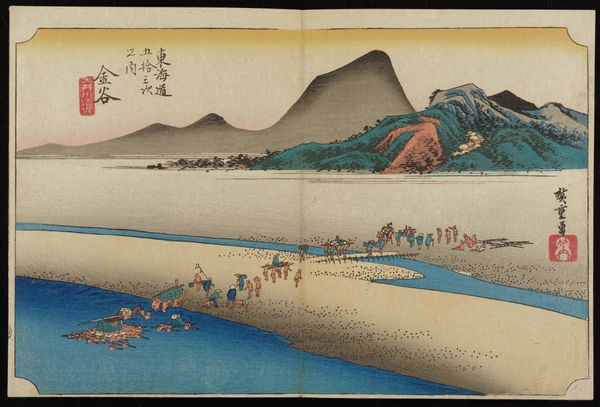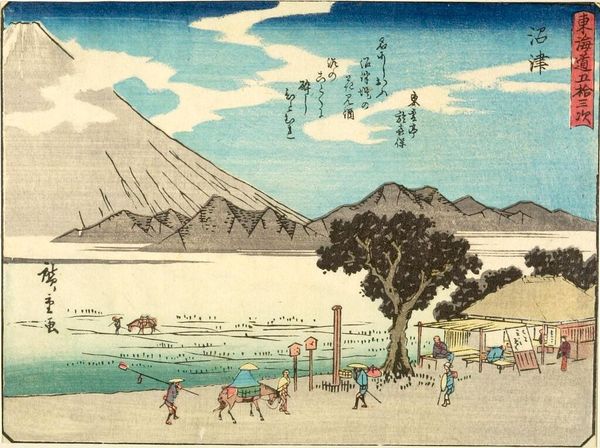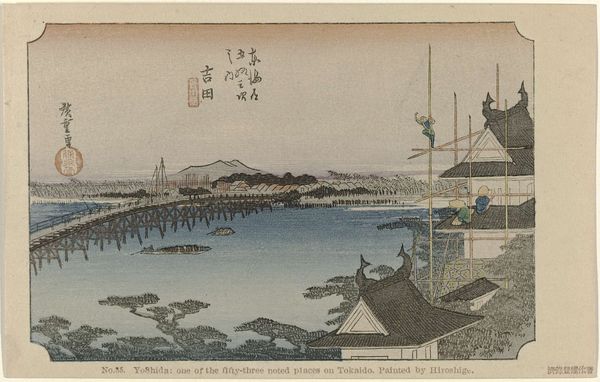
Dimensions: height 90 mm, width 141 mm
Copyright: Rijks Museum: Open Domain
Curator: This is "Odawara," a woodblock print by Utagawa Hiroshige, dating from 1906. Editor: It's remarkable, isn't it? I’m struck by the layering, the way the marsh grasses and the mountains almost flatten the space. The subdued colors add to a sense of serenity, even melancholy. Curator: Indeed. This print is part of Hiroshige's "Fifty-Three Stations of the Tōkaidō" series. These works were widely distributed and consumed during the Edo period. We can see in it an exploration of the commercial and artistic potential of landscape imagery. Consider the availability and accessibility of this piece due to the nature of printmaking and circulation methods that drove ukiyo-e production and dissemination. Editor: That’s a really vital point. We tend to isolate these objects in museums now, divorced from their original context. Ukiyo-e prints were a popular commodity! This particular scene is fascinating because it shows travelers being carried across the river. We're seeing not just a landscape, but also a mode of transportation and labor—a snapshot of social life. Curator: Absolutely. And notice how the figures become part of the landscape. This reflects a shift in art's social function and aesthetic considerations with new subjects entering artistic visibility beyond conventional figure-based artwork that privileged those in power. Also, it underscores printmaking’s pivotal role in bringing such representation to a larger viewership. Editor: Thinking about it now, the very act of creating these prints would have involved multiple artisans, each specializing in different aspects of the process: carving, printing, etc. It underscores collaboration and the division of labor that existed even within artistic production during that era. Curator: Precisely. It challenges the romanticized idea of the solitary artist, highlighting the often overlooked contributions of those who worked behind the scenes. Editor: Understanding the context of creation and consumption reframes how we interpret this piece today, away from idealized aesthetics toward concrete circumstances of production, consumption, and cultural exchange. Curator: Reflecting on this reminds me how deeply embedded art production is in the realities of work, material and distribution, shaping perceptions, social structures, and visual narratives over time. Editor: It certainly opens up another fascinating facet in appreciating and studying art history—revealing overlooked processes involved when making artwork like this print.
Comments
No comments
Be the first to comment and join the conversation on the ultimate creative platform.
